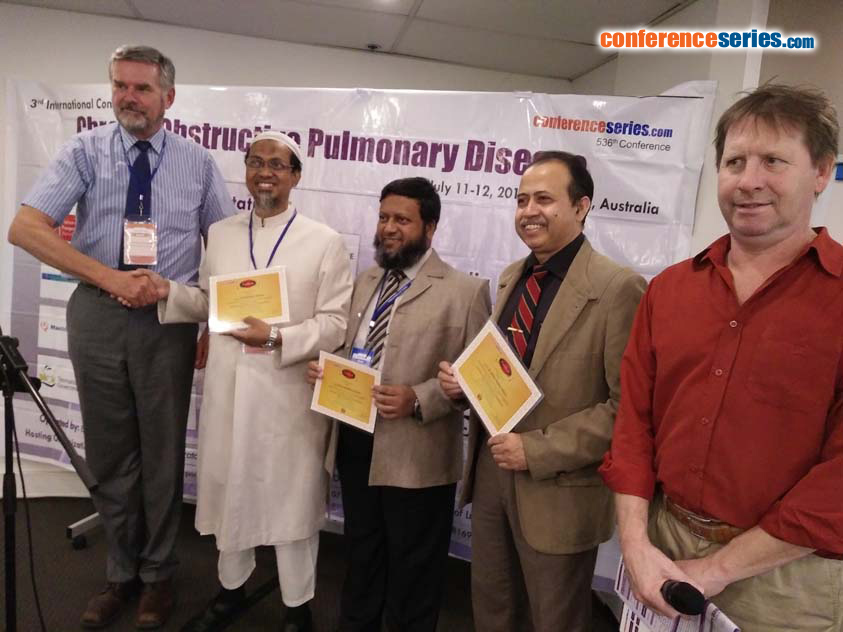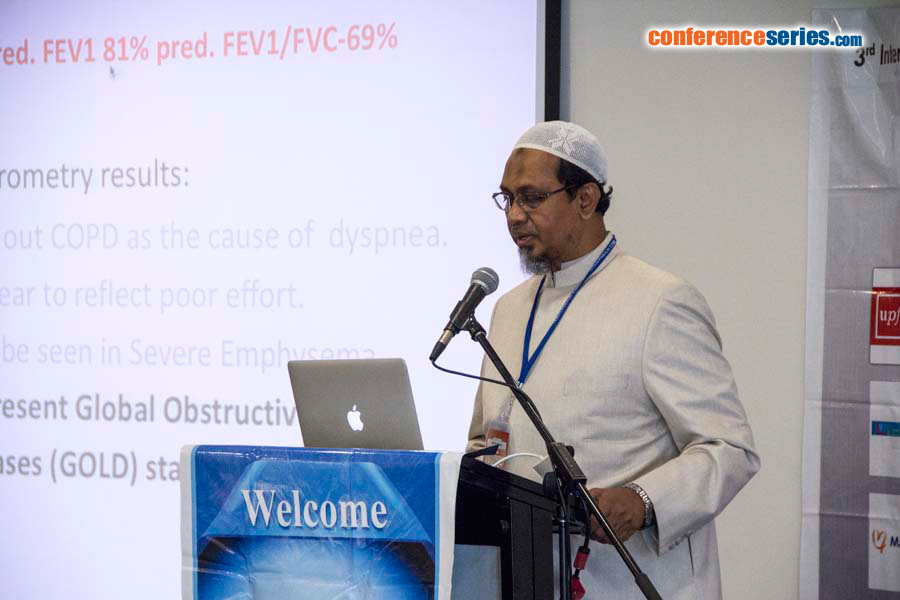
Md. Rashidul Hassan
Director
National Institute of Diseases of the Chest & Hospital
Bangladesh
Title: SEF Classification for COPD Management
Biography
Biography: Md. Rashidul Hassan
Abstract
Chronic Obstructive Pulmonary Disease (COPD) is one of the most common respiratory ailments encountered by the physicians. This disease is a burden for both developed and developing countries. In 2007, a study on COPD known as BOLD-BD (Burden of Obstructed Lung Disease in Bangladesh) revealed the prevalence of COPD in general population to be 4.32% Chronic Obstructive Lung Diseases (COPD) may cause significant inflammation and narrowing of small airways which is not reflected very well by FEV1. Moreover, FEV1 correlated well with exertional dyspnea, not with chronic productive cough even with wheeze. Patients with chronic productive cough are more prone to exacerbations than emphysema patient, so management of Chronic Obstructive Lung Diseases (COPD) depends on both symptoms and exacerbations besides FEV1. GOLD classification ABCD sub-classification is not friendly for GPs . Considering limitations of FEV1, presence of complications (respiratory failure, other comorbidities), frequency of exacerbations and impact of disease on patients’ life a new management plan for Chronic Obstructive Lung Diseases (COPD) patients is formulated which is more effective than Gold management plan. So, a modified staging and management of Chronic Obstructive Lung Diseases (COPD) is formulated which is based on symptoms (S) frequency of exacerbations (E) and Function (Lung Function= FEV1) and depending on these three parameters, SEF(symptom, exacerbation and Function) classification has been made. According to SEF classification, COPD patients are dividing into four stages on the basis of FEV1 and each stage is again sub-classified on the basis of symptoms (a) and exacerbation (b)







